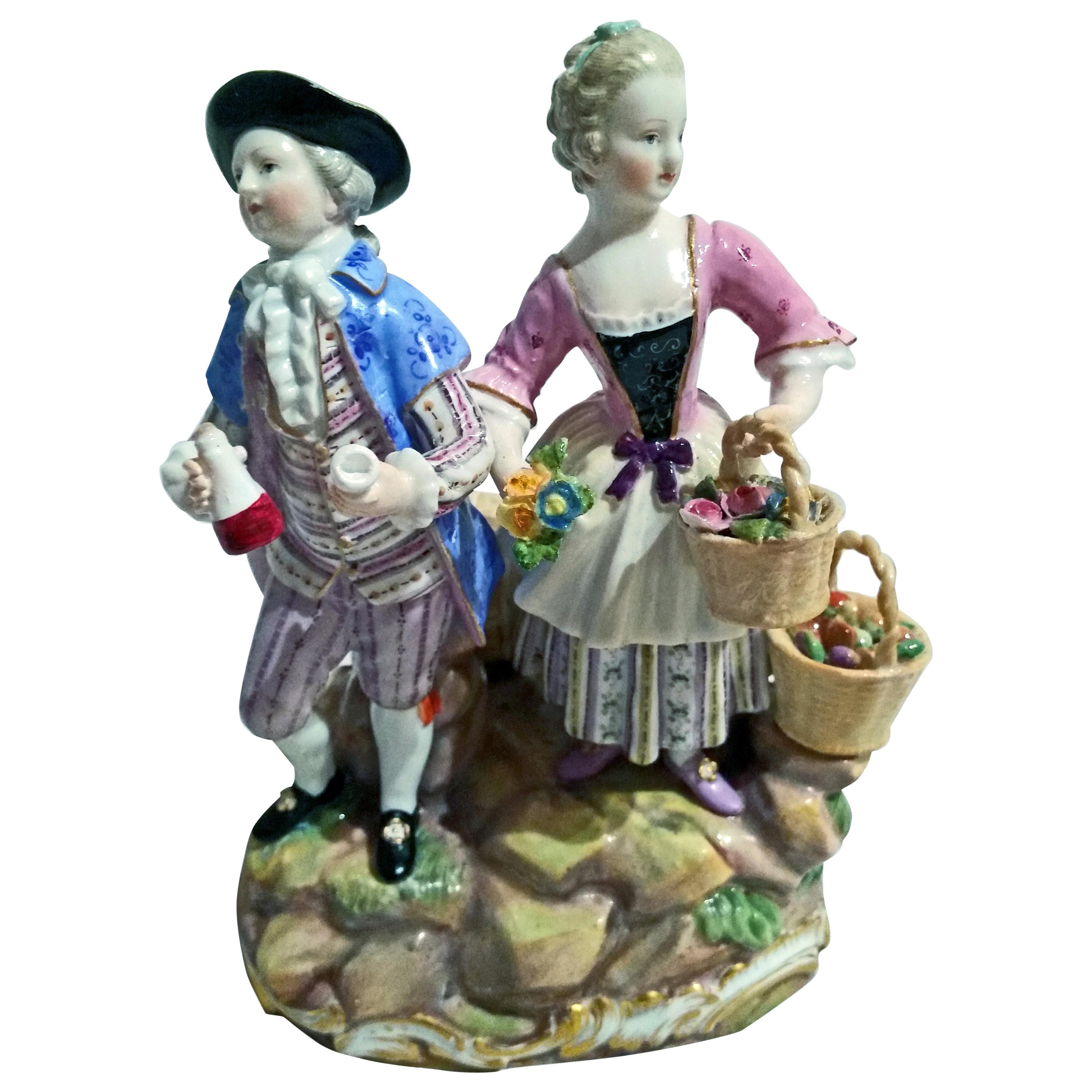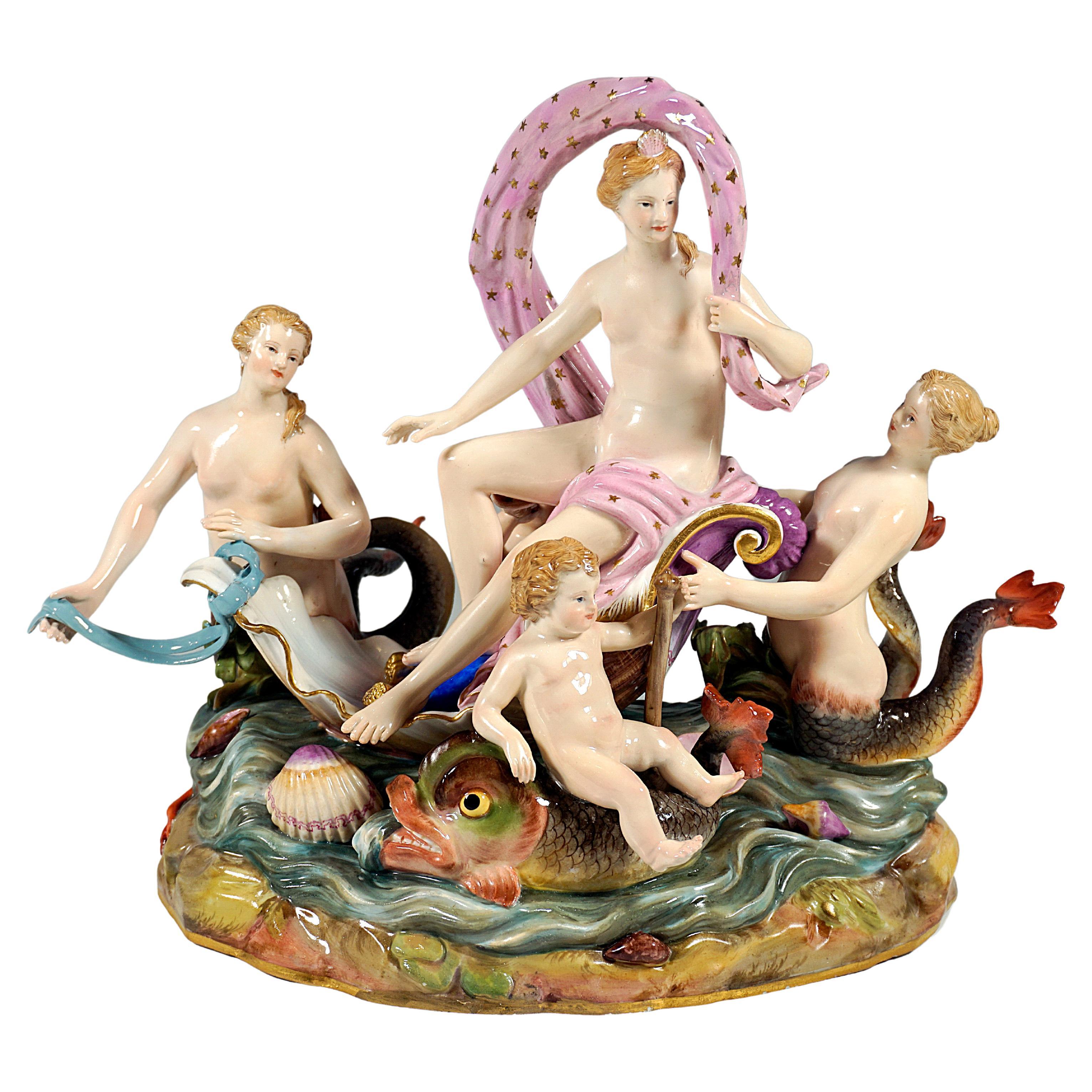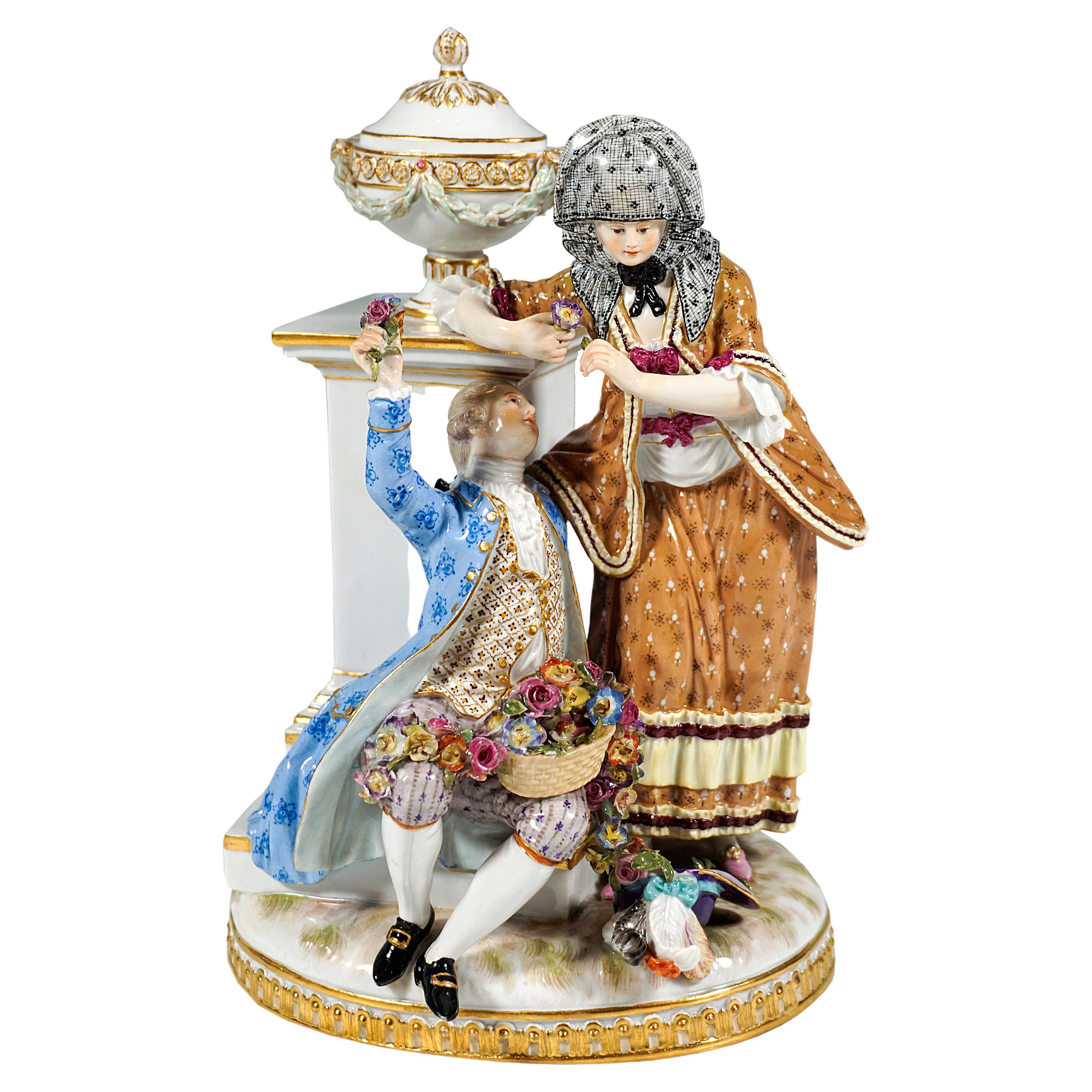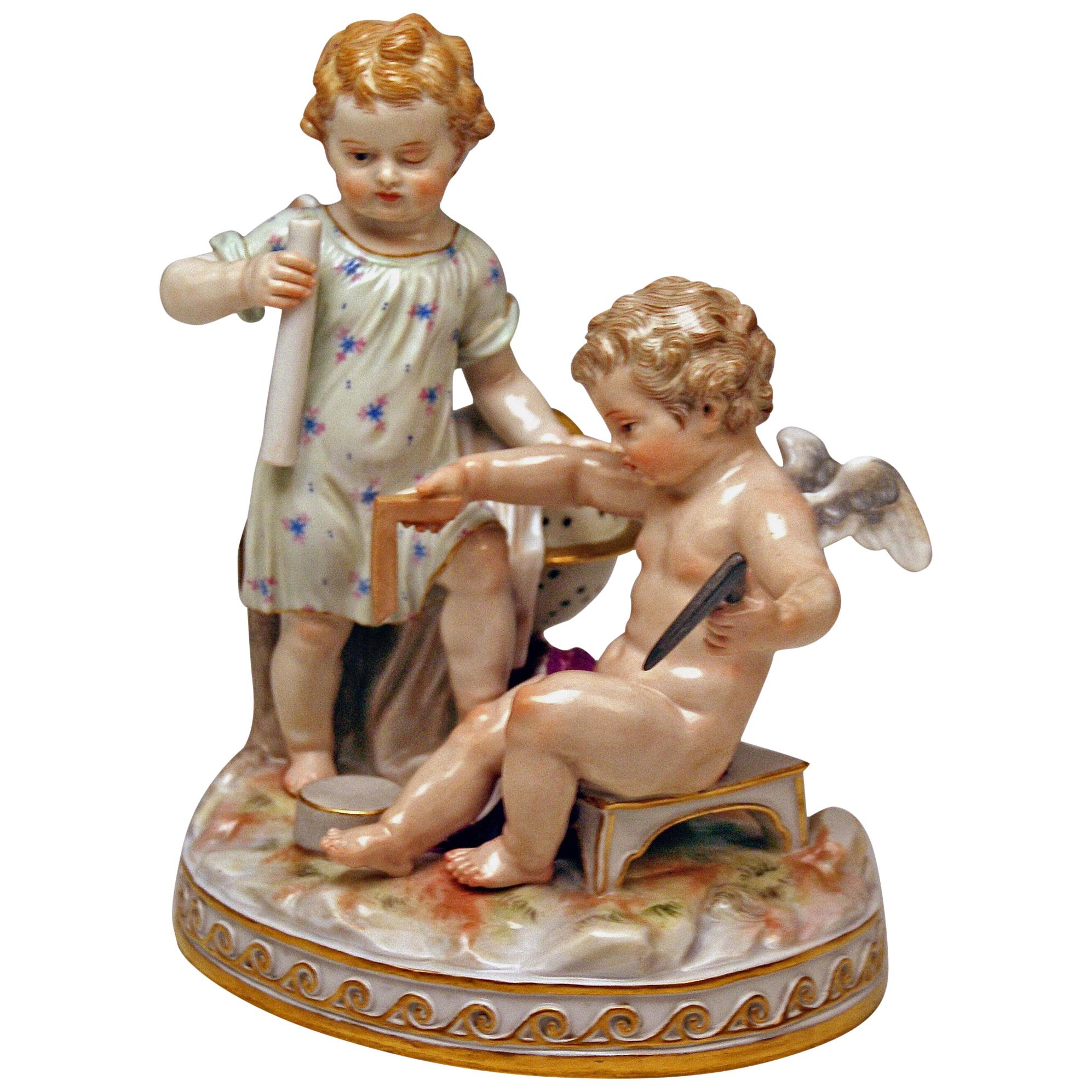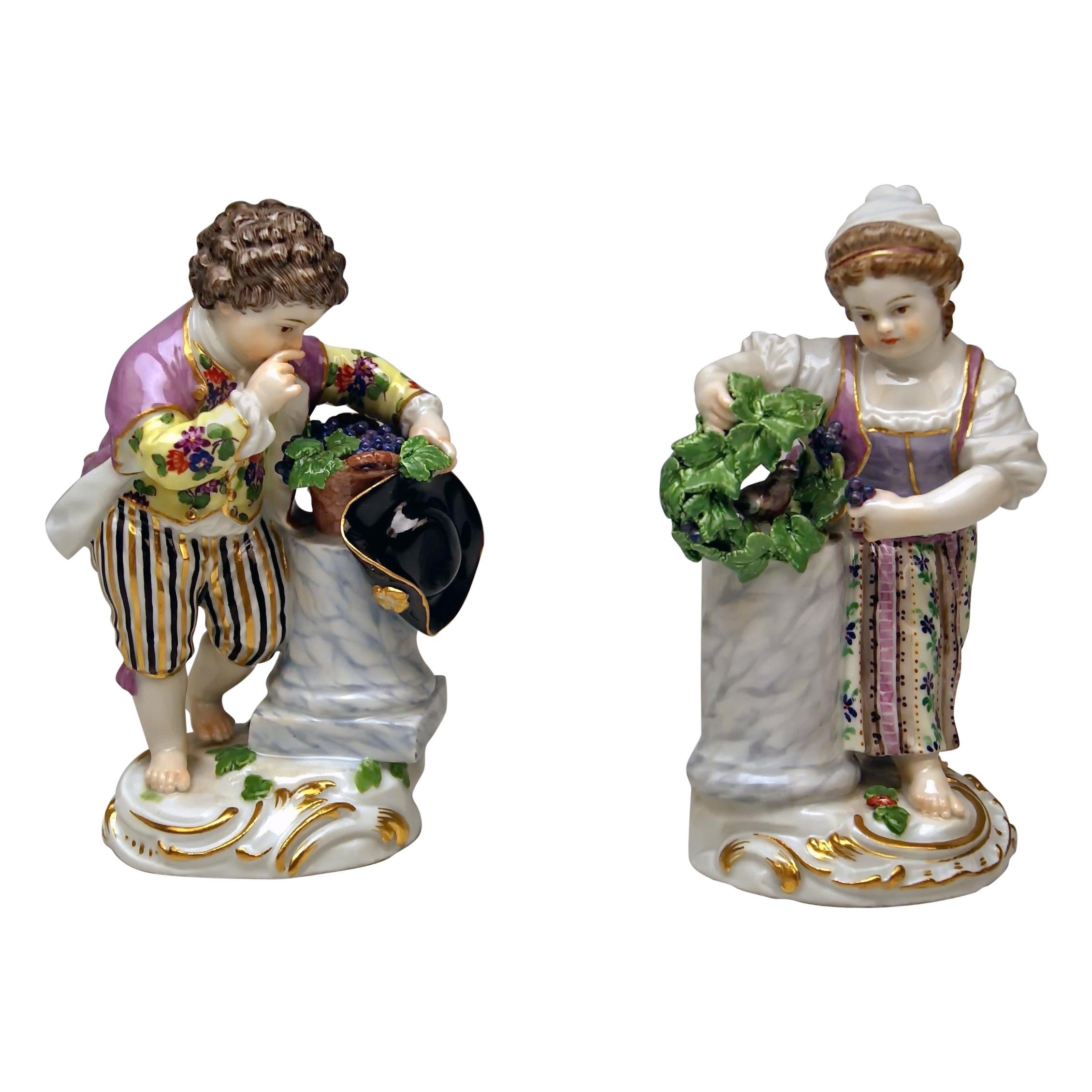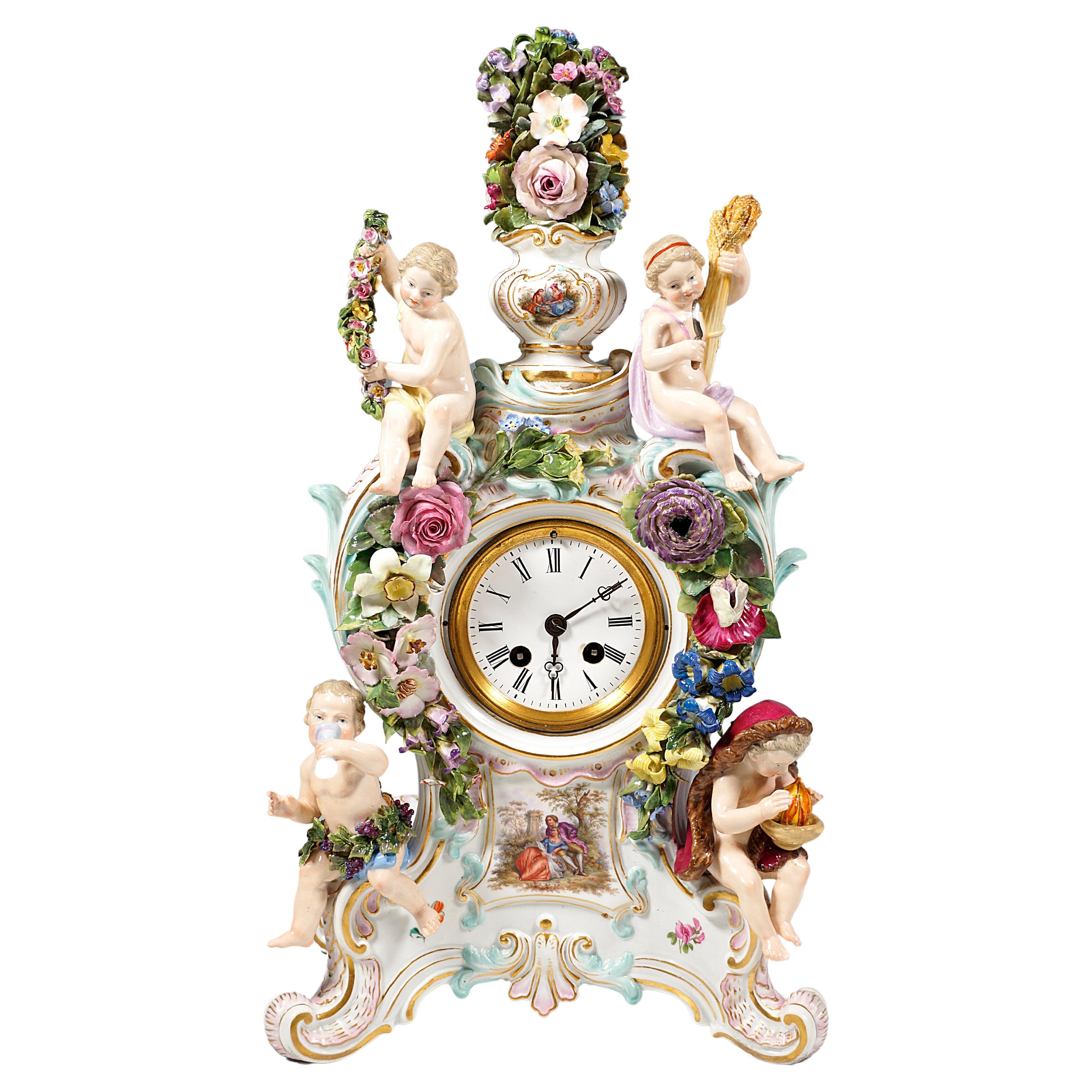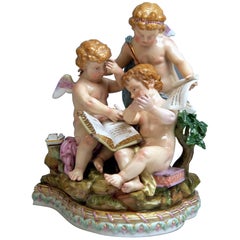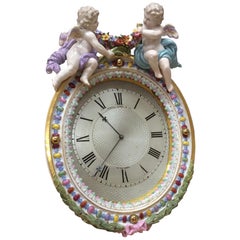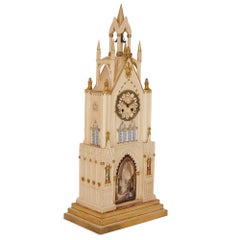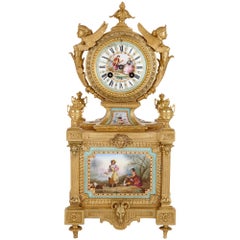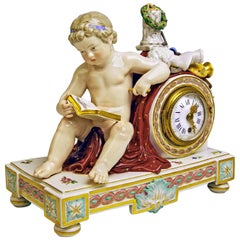
Meissen Mantel Table Clock Cherub The Fine Arts by Michel V. Acier, circa 1860
View Similar Items
Want more images or videos?
Request additional images or videos from the seller
1 of 9
Meissen Mantel Table Clock Cherub The Fine Arts by Michel V. Acier, circa 1860
About the Item
- Creator:Michel Victor Acier 1 (Sculptor)
- Dimensions:Height: 9.44 in (23.98 cm)Width: 9.64 in (24.49 cm)Depth: 5.31 in (13.49 cm)
- Style:Rococo (In the Style Of)
- Materials and Techniques:
- Place of Origin:
- Period:
- Date of Manufacture:MADE CIRCA 1860
- Condition:there aren't any damages existing. the clock's mechanism is working well / it was checked by clockmaker.
- Seller Location:Vienna, AT
- Reference Number:1stDibs: LU101449341161
About the Seller
5.0
Gold Seller
These expertly vetted sellers are highly rated and consistently exceed customer expectations.
Established in 1988
1stDibs seller since 2013
279 sales on 1stDibs
Typical response time: 5 hours
More From This SellerView All
- Meissen Figurines Cherubs Allegory of Arithmetic Model 12 by Acier, circa 1860By Michel Victor Acier 1Located in Vienna, ATMeissen Gorgeous cherub figurines group: Allegory of Arithmetic. Designer: Michael Victor Acier (1736-1799). Design made circa 1774 / this model of cherubs' group had been mad...Category
Antique 1860s German Rococo Porcelain
MaterialsPorcelain
- Rare Meissen Rococo Genre Group 'The Happy Parents', by M V Acier, Circa 1860By Meissen Porcelain, Michel Victor Acier 1Located in Vienna, ATExceptional Meissen porcelain group of the 19th century: Young mother in elaborate Rococo house dress: Ruched wide long skirt, bodice, fitted frilled coat with hood, the upswept hair covered by a high voluminous bonnet with ruched hem and bows, sitting on a splendid Louis XVI style bench and placing her right foot on a stool, beside her the happy spouse in frock coat, waistcoat over frilled shirt and knee breeches with white stockings, both embracing each other at the back and looking down at the baby wrapped in cloth and lying half naked on a cushion on both their laps, the father guiding his right hand to the mother's chin in an affectionate gesture. Behind them a little boy in a playsuit and hat, holding a bowl and blowing soap bubbles with a tube. The group is based on an oval natural base with sculpted flowers and foliage and gold heightened lateral frieze decoration. Particularly elaborate, detailed design and staffage. Designed by MICHAEL VICTOR ACIER (1736 - 1799) Skilled as a sculptor in Paris, he received a call to the porcelain manufactory in Meissen in 1764, and was there, after Kändler's death in 1775, solely responsible for the artistic interests of the manufactory. He created a large number of groups in the Watteau style...Category
Antique Mid-19th Century German Rococo Porcelain
MaterialsPorcelain
- Meissen Mantel Table Clock Bronze Porcelain Autumn Fall Kaendler, circa 1745By Johann Joachim KaendlerLocated in Vienna, ATMeissen gorgeous rococo mantel / table clock made of gilded / gilt bronze, excellently decorated with sculptured figurines made of porcelain. Manufactory: Meissen Hallmarked: Blue M...Category
Antique 1740s German Rococo Porcelain
MaterialsBrass, Bronze, Enamel
$5,277 Sale Price25% Off - Meissen Figurines Cherubs Wine Growers Model C 60 by Acier Made circa 1870By Michel Victor Acier 1Located in Vienna, ATMeissen gorgeous figurine group: Cherubs as Wine Growers The details are stunningly sculptured = finest modelling! Design: Michel Victor Acier (1736-1799) / model C 60 created 1...Category
Antique 1870s German Rococo Porcelain
MaterialsPorcelain
- Meissen Figurines Cherubs with Swing Model G 32 by Acier Made circa 1920By Michel Victor Acier 1Located in Vienna, ATMeissen gorgeous figurine group: Cherubs with Swing The details are stunningly sculptured = finest modelling! Design: Michel Victor Acier (1736-1799) / model G 32 created 1780 ...Category
Early 20th Century Austrian Rococo Porcelain
MaterialsPorcelain
- Meissen Allegorical Group 'The Water', by M.V. Acier, Germany, Around 1860By Meissen Porcelain, Michel Victor Acier 1Located in Vienna, ATExcellent Meissen porcelain group of the 19th century: Nymph, covered only with a cloth, seated on a half shell floating on the water, holding the cloth at one end so that it forms ...Category
Antique Mid-19th Century German Baroque Porcelain
MaterialsPorcelain
You May Also Like
- Meissen Porcelain Strut Mantel ClockBy Howell James & Co.Located in Norwich, GBA Meissen porcelain oval shaped Strut clock with two putti and well modelled trailing flowers and wreath decoration. (The back of the case at 12 o’clock carrying the crossed swords m...Category
Antique 1870s English Victorian Mantel Clocks
MaterialsPorcelain
- French Porcelain Mantel Clock by Dagoty and HonoreBy Edouard Honoré 1, DagotyLocated in London, GBThis beautiful Gothic Revival style porcelain clock was made by the prestigious French firm Dagoty and Honore, founded by the esteemed porcelain makers Pierre-Louis Dagoty and Edouard Honore...Category
Antique Early 19th Century French Gothic Revival Mantel Clocks
MaterialsPorcelain
- Louis XVI Style Mantel Clock by Ernest RoyerLocated in London, GBThis fine neoclassical style mantel clock will make a sumptuous addition to a grand room, or could be given as a unique gift to a loved one. The clock is the work of Ernest Royer, an...Category
Antique 19th Century French Louis XVI Mantel Clocks
MaterialsBronze, Ormolu
- Porcelain Clock in the Louis XV Style by Jacob PetitBy Jacob PetitLocated in London, GBThis antique porcelain mantel clock demonstrates the 19th century nostalgia for the delicately elegant decorative arts under King Louis XV, also known as the Rococo style. Crafted by celebrated porcelain artist Jacob Petit, this exquisite clock is particularly notable for the way in which the porcelain has been shaped so as to give the clock such a whimsically free-spirited, scrolling shape. The clock is formed as a clock case upon a lower base, which are both decorated as a though a singular piece with green glaze on a white ground, accented with painted floral panels and extensive gilt highlights all over. The clock case, which is particularly exuberant in design, features a central, circular clock dial. The white enamelled dial is bordered with beaded ormolu, and features black Roman numerals and the inscription 'Scherer'- the name of the 19th century Parisian clock...Category
Antique 19th Century French Rococo Mantel Clocks
MaterialsPorcelain
- Large Rococo Style Porcelain Mantel Clock by MeissenBy Meissen PorcelainLocated in London, GBLarge Rococo style porcelain mantel clock by Meissen German, 19th century Measures: Height 66cm, width 33cm, depth 25cm This superb mantel clock is a truly wonderful example of ...Category
Antique 19th Century German Rococo Mantel Clocks
MaterialsPorcelain
- Sèvres Porcelain Louis XVI Lyre Mantel Clock by Kinable, Dial by DubuissonBy Dieudonné Kinable, DubuissonLocated in Paris, FRDieudonné Kinable Enamel Dial Attributed to Dubuisson (1731-1815) Exceptional Porcelain Lyre Mantel Clock from the Royal Sèvres Porcelain Manufactory Paris, late Louis XVI period, circa 1785-1790 Height 62 cm; width 26 cm; depth 16 cm The round enamel dial, signed “Kinable”, indicates the hours in Roman numerals, the fifteen-minute intervals in Arabic numerals, the annual calendar and the signs of the Zodiac, by means of four hands, two of which are made of pierced gilt bronze, the two others in blued steel. The magnificent lyre-shaped case is made of “bleu nouveau” Sèvres porcelain and finely chased and gilt bronze. The bezel is made up of a gilt bronze twisted rope; the pendulum is adorned with brilliant-cut paste stones; the body of the lyre is adorned with gilt bronze beading and with laurel leaf and seed motifs, with two rosettes issuing floral and foliate swags. The clock is surmounted by a mask with radiating sunrays. The spreading foot is decorated with beading and twisted rope motifs and a leafy garland. The en-suite decorated oval base is raised upon four flattened ball feet. The Royal Sèvres Porcelain Factory produced the lyre clock model as of 1785. Four colours were offered: turquoise, green, pink and bleu nouveau. These exceptional clocks were made for the connoisseurs of the time. Louis XVI had a similar clock in his Salon des jeux in Versailles; its dial bore the signature of the clockmaker Courieult (this is almost certainly the example illustrated in P. Verlet, Les bronzes dorés français du XVIIIe siècle, Paris, 1999, p. 41). Kinable, however, was the clockmaker who purchased the greatest number of lyre cases from the factory, and he developed the model in the late 18th century. Among the porcelain lyre clocks signed by this brilliant horologer, one example is in the Victoria & Albert Museum in London (illustrated in H. Ottomeyer and P. Pröschel, Vergoldete Bronzen, Band I, Munich, 1986, p. 252, fig. 4.6.26). A second such clock is in the Royal British Collection (see C. Jagger, Royal Clocks, The British Monarchy & its Timekeepers 1300-1900, 1983, p. 130, fig. 176). Bibliography: M. Gay and A. Lemaire, “Les pendules lyre”, in Bulletin de l’Association nationale des Collectionneurs et Amateurs d’Horlogerie ancienne, Winter 1993, n° 68, p. 5-40. Dieudonné Kinable (active circa 1785-1810) One of the most important Parisian clockmakers of the late 18th century. His shop was located at n° 131 Palais Royal. He purchased a great number of lyre-type porcelain clock cases...Category
Antique 1780s French Louis XVI Mantel Clocks
MaterialsBronze
Price Upon RequestFree Shipping
Recently Viewed
View AllMore Ways To Browse
Musical Clock Painting
Brass Red Horn French
First Time Manufactory Clock
Meissen Hunting
Dresden Porcelain Box
Dresden Clock
Dresden Wreath
French Brass Hunting Horn
Antique Musical Figurines
Purple Porcelain Clocks
Lute Tables
Dresden Box
Arab Bust
Music Figurine
Antique Clockface
Enamel Music Box
Wallendorf Tea Cup
Worcester Dry Blue


